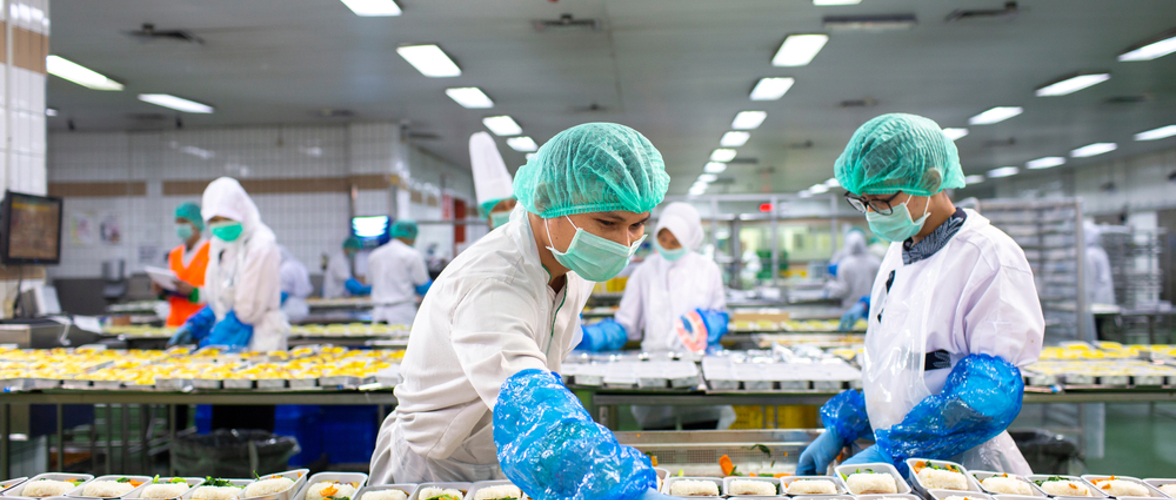With the economic landscape changing drastically following the COVID-19 (coronavirus) pandemic, IBISWorld’s banking clients will need to pinpoint industries that will help their commercial businesses grow.
Similar to how the new Infrastructure Investment and Jobs Act (IIJA) has many critical risks and opportunities for banking clients, IBISWorld has selected seven industries that have a high capital intensity, high technology change and low to medium risk level.
These industries are anticipated to benefit from the monetary backing provided by our clients to produce strong results in 2022 and 2023.
1. Wind Power
Industry Revenue (2022): $21.5 billion
Average Revenue Per Business: $24.3 million
Profit: 16.5%
Capital Intensity Ratio: $8.73
Risk Score: 3.74

Wind Power operators require minimum labor following the installation of the wind turbines. The most important cost for operators is deprecation, as companies must purchase wind turbines and construct wind farms.
Additionally, operators are constantly seeking to innovate to generate the greatest amount of energy. Furthermore, the push toward sustainability and renewable energy alongside electric power increasing 2.9% keeps risk LOW and steady.
Looking ahead
Revenue Forecast (2023): $23.5 billion
Revenue Growth (2022-23): 9.0%
2. Engine & Turbine Manufacturing
Industry Revenue (2022): $40.0 billion
Average Revenue Per Business: $47.0 million
Profit: 6.2%
Capital Intensity Ratio: $0.13
Risk Score: 4.04

Operators in the Engine and Turbine Manufacturing industry require significant capital expenditure in the form of equipment and machinery. Investments in automation increase production speed and cost efficiency. Operators seek to innovate products that reduce emissions and increase fuel efficiency.
Risk remains LOW as a result of favorable movements in private investment in industrial equipment and machinery as well as demand from truck transportation. However, their impact will be partially offset by a projected rise in growth risk.
Looking ahead
Revenue Forecast (2023): $41.0 billion
Revenue Growth (2022-23): 1.5%
3. Diagnostic & Medical Laboratories
Industry Revenue (2022): $68.3 billion
Average Revenue Per Business: $1.7 million
Profit: 24.7%
Capital Intensity Ratio: $0.14
Risk Score: 4.77

The Diagnostic and Medical Laboratories industry require significant capital investment; however, it is offset by high labor costs. Operators focus heavily on technological innovation to automate tests and tasks, which requires monetary backing for research and development expenses. Risk for this industry is forecast to be MEDIUM.
The primary positive factors affecting this industry are a growing economic life cycle stage and favorable movements in total health expenditure as well as the number of people with private health insurance. However, the industry struggles with high competition, but structural risk remains LOW due to increasing barriers of entry.
Looking ahead
Revenue Forecast (2023): $70.2 billion
Revenue Growth (2022-23): 2.8%
4. Vending Machine Operators
Industry Revenue (2022): $8.9 billion
Average Revenue Per Business: $0.5 million
Profit: 4.5%
Capital Intensity Ratio: $0.22
Risk Score: 4.74

Companies in the Vending Machine Operators industry require a moderate amount of capital investment, which is largely allocated toward the purchase of vending machines. Additionally, operators upgrade machines to include the latest hardware, such as card readers and remote monitoring systems. As payment systems continue to evolve, so will the need for monetary backing as operators keep up with competition.
Risk for this industry is forecast to be MEDIUM due to favorable movements in consumer spending and per capita tea consumption. However, the industry suffers from HIGH structural risk due to high levels of competition.
Looking ahead
Revenue Forecast (2023): $9.0 billion
Revenue Growth (2022-23): 1.4%
5. Plastic Bottle Manufacturing
Industry Revenue (2022): $12.0 billion
Average Revenue Per Business: $25.0 million
Profit: 8.8%
Capital Intensity Ratio: $0.30
Risk Score: 4.75

The Plastic Bottle Manufacturing industry requires a moderate amount of capital investment. The majority of these costs are attributed to new plants and equipment, in addition to constant product innovation. The industry has trended toward higher mechanization over the five years to 2022, which has led to higher capital costs.
Risk for this industry is forecast to be MEDIUM due to favorable movements in the world price of crude and price of plastic materials and resin. However, their affects are slightly offset by declining per capita disposable income and an increase in the trade-weight index (TWI).
Looking ahead
Revenue Forecast (2023): $12.1 billion
Revenue Growth (2022-23): 1.0%
6. Generic Pharmaceutical Manufacturing
Industry Revenue (2022): $50.8 billion
Average Revenue Per Business: $88.4 million
Profit: 7.1%
Capital Intensity Ratio: $0.20
Risk Score: 4.93

Operators in the Generic Pharmaceutical Manufacturing industry require a moderate capital expenditure as consistent and precise production processes are heavily dependent on purchased equipment. Additionally, operators require monetary backing for research and development (R&D) expenses to develop new drug formulations.
Risk is forecast to remain MEDIUM due to favorable movements in R&D and an uptick in the number of people with private health insurance. However, structural risk remains HIGH as the industry struggles with high competition. Additionally, growth risk is projected to rise.
Looking ahead
Revenue Forecast (2023): $51.8 billion
Revenue Growth (2022-23): 2.0%
7. Animal Food Production
Industry Revenue (2022): $60.1 billion
Average Revenue Per Business: $15.4 million
Profit: 5.1%
Capital Intensity Ratio: $0.29
Risk Score: 4.99

The Animal Food Production industry requires a medium level of capital investment in the form of machinery to process inputs, manufacture and package products. Large facilities typically rely on capital, while small-to-medium sized facilities lack the resources to invest in equipment.
Additionally, with the rise of e-commerce and analytics, operators are increasing their investment in data-driven technology to adjust to shifting consumer preferences. Overall, risk is forecast to be MEDIUM. However, the industry suffers from MEDIUM-HIGH structural risk due to high competition and low barriers to entry.
Looking ahead
Revenue Forecast (2023): $61.1 billion
Revenue Growth (2022-23): 1.5%









